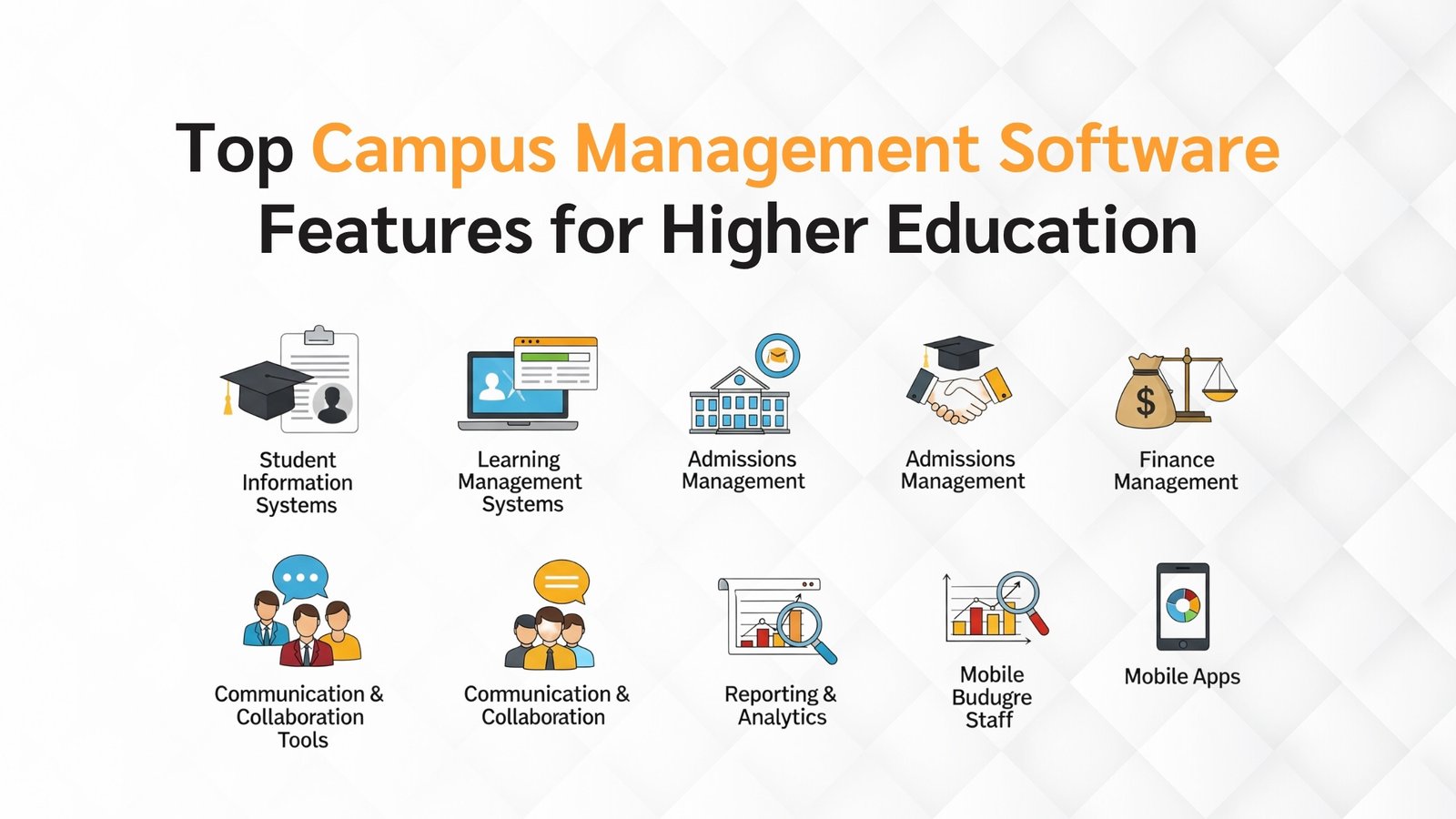Campus Management System Software With Admission, Fees, and Attendance in One Platform
Managing a growing educational institution demands more than spreadsheets and paper registers. As the number of students, courses, and compliance requirements increase, outdated systems start falling apart.
A robust Campus Management System Software can centralize your operations—combining everything from student onboarding to attendance tracking in a single streamlined platform.
Why Modern Institutions Need an Integrated Solution
Institutes are facing more pressure than ever—competition, digital transformation, and rising parent expectations. Separate tools for different tasks like admissions, fees, and class schedules slow down teams and frustrate students. When each department works in silos, communication breaks and mistakes multiply.
An integrated platform offers a single source of truth, cutting down administrative burden and ensuring nothing falls through the cracks. From the moment a student applies to the time they graduate, every action is tracked and accessible.
Core Modules That Power a Unified Campus
1. Admission Management
Admissions form the foundation of any academic year. A dedicated module helps digitize the entire journey:
-
Online application submission and tracking
-
Real-time seat availability updates
-
Auto-allocation based on merit or entrance exams
-
Document upload, verification, and shortlisting
-
Communication tools for sending alerts to applicants
This not only saves time for your team but also creates a more professional experience for students and parents.
2. Fee Collection and Finance Integration
Manual fee collection leads to errors, late payments, and accounting gaps. A fee management module provides:
-
Customizable fee structures (by course, category, or scholarship)
-
Online payment gateways and auto-receipts
-
Fine calculation for late payments
-
Multi-currency and tax support (if required)
-
Integration with finance/accounting software
This ensures transparency, reduces revenue leakage, and eliminates the hassle of reconciling offline records.
3. Attendance Tracking for Staff and Students
Maintaining attendance manually becomes unreliable as the student base grows. A digital system ensures:
-
Biometric or RFID-based check-ins
-
Real-time attendance reports for parents and admins
-
Auto-alerts for low attendance
-
Faculty-wise attendance logs
-
Integration with grade eligibility and exam access
Students can be warned in time, and teachers get better control over engagement metrics.
Advanced Features for Future-Ready Institutions
While admissions, fees, and attendance are the core, next-gen software brings much more to the table:
Timetable and Academic Planning
-
Auto-schedule based on faculty availability
-
Clash detection and resolution
-
Room allocation and equipment mapping
-
Student view with reminders and updates
Examination Management
-
Exam hall planning
-
Roll number and seating auto-generation
-
Marksheet and grading system (customizable)
-
Integration with parent portals and transcripts
Communication and Notifications
-
Centralized SMS/email/WhatsApp alerts
-
Parent-teacher circulars
-
Push notifications for app users
-
Role-based access to messages
Student Lifecycle and Performance Dashboards
-
Year-over-year progress tracking
-
Behavioral and academic reports
-
Counseling or disciplinary log tracking
-
Alumni data sync for long-term engagement
Benefits to Stakeholders at Every Level
For School and College Administrators
-
Higher operational efficiency
-
Real-time reporting across departments
-
Accurate compliance and audit records
-
Less dependency on manual oversight
For Teachers and Staff
-
No duplication of effort
-
Easy data entry and access
-
Faster coordination with departments
-
Automated reminders and tracking
For Students and Parents
-
Better visibility of dues and progress
-
Real-time updates and communication
-
Quick access to schedules and results
-
Reduced queue time during admissions or fees
Implementation Challenges and How to Solve Them
Adopting a new system is not always smooth, especially if your team is used to legacy tools. Common concerns include:
-
Resistance to change – Solve with hands-on training and pilot phases
-
Data migration risks – Work with vendors offering professional data transfer support
-
Customization limitations – Choose platforms that are modular and flexible
-
Ongoing support – Look for providers that offer post-deployment service plans
A phased rollout with parallel testing helps minimize disruptions and gives users time to adapt.
How to Select the Right Vendor
When evaluating vendors, go beyond flashy demos. Focus on:
-
Experience in education domain
-
Scalability for growing campuses
-
Security certifications (GDPR, ISO, etc.)
-
Mobile compatibility for on-the-go access
-
Strong customer support track record
-
Customization options for your unique workflows
Always ask for a trial and speak with existing customers before making a decision.
Real-World Results After Adopting Campus Software
Most institutions that deploy integrated systems report:
-
Up to 60% reduction in administrative workload
-
80% improvement in fee collection timeliness
-
2x faster admission processing
-
40% more parent satisfaction due to real-time visibility
These outcomes aren’t just about cost savings—they translate into a better academic environment.
Conclusion
Institutions that embrace digital transformation improve not just their backend systems but also the overall learning experience. A well-implemented Campus Management System Software ensures all key operations—admissions, fees, attendance—work together seamlessly, reducing errors and building trust with students and parents alike.


